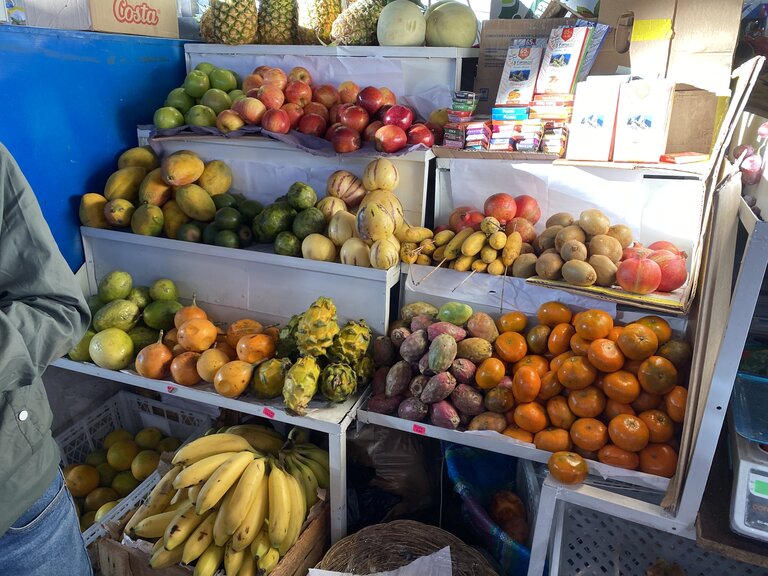“¡Qué papaya!” “¡Qué piña!” “¡Es la muerte!” “¡Es de ley!” You’re unlikely to find these phrases in a Spanish dictionary, but you’ll certainly hear them upon arriving in Peru. I have been in Cusco for less than a week, and these phrases have already come up in multiple conversations that I’ve had with the local cusqueños.
Peruvians are incredibly proud of the food they produce, and especially so of their fruit. During my first meal with my host mom, one of the first things we discussed were the many different types of fruit that Peru produces (avocado, papaya, pineapple, lúcuma, maracuyá, blueberries, strawberries, mango, cactus fruit, the list goes on), and during my first class the following morning, we spent a significant amount of time learning about the value of fruit in Peru, both culturally and economically. In this context, it was not surprising to learn that a few of the most common colloquial phrases used here are related to fruits. “¡Que papaya!” or “Es papayita” is used when something is super easy, be it homework, a chore, or a challenge posed by a friend. I’ve heard this phrase used by both my professor and some local students. “¡Qué piña!” is the other fruit-related phrase I’ve heard (piña being pineapple), and people say this when someone has suffered a bout of bad luck. For example, if you missed the bus to class (or got on a bus heading in the wrong direction), stepped in one of the presents left by the many dogs on the sidewalk, or had an activity canceled due to bad weather, a common response is “Qué piña!” I learned this phrase from my professor when she told me the story of an accident experienced by a past student. I definitely hope to put both of these phrases into practice – they’re super fun to say, and I’m also a big fruit lover.
Moving away from fruit phrases, “Es la muerte!” is used to describe something incredible or impressive, especially in terms of food or a good view. Going back to my first dinner with my host mom, when she was explaining to me the delicious fruit that Peru produces, she finished by saying “La fruta en Perú es la muerte!”—”The fruit in Peru is incredible!” The last Peruvian phrase I have learned so far is “Es de ley!”, which is used to describe something that is a must-do, can’t-miss opportunity. I learned this phrase from a tour guide who was showing me around Cusco, and when I asked him what a few things I should do before leaving Peru are, he said, “Hay muchas cosas que puedes hacer, pero ir a Machu Picchu es de ley”—”There are a lot of things you can do, but you absolutely have to go to Machu Picchu.” Like the fruit phrases, I’m working hard to integrate these “peruanismos” into my daily Spanish vocabulary; they’re short, fun to say, and allow me to express myself more like a native speaker. Learning Spanish in a classroom has its benefits, but interacting with natives has allowed me to pick up some new phrases that I otherwise wouldn’t have learned. Es la muerte!

